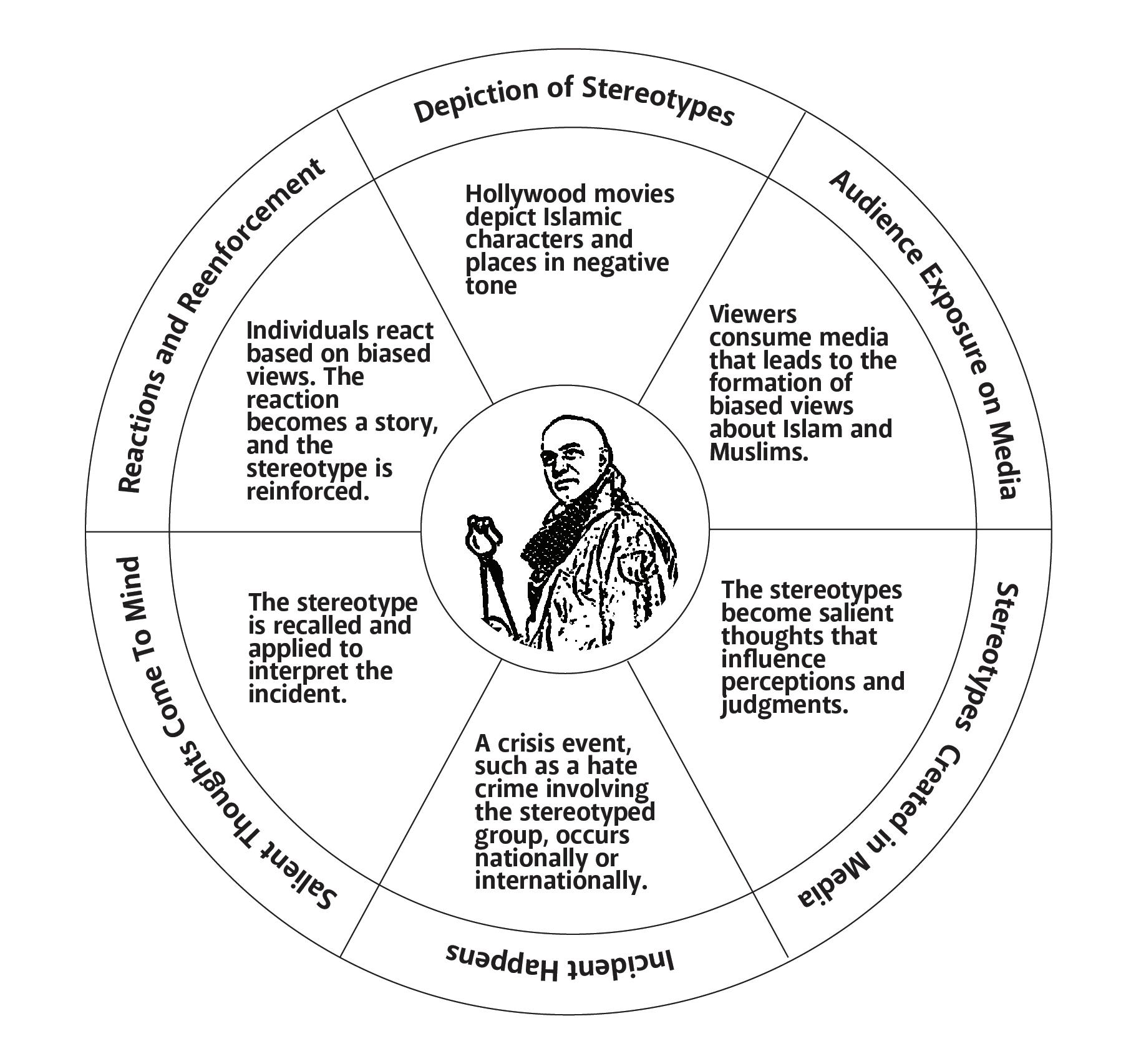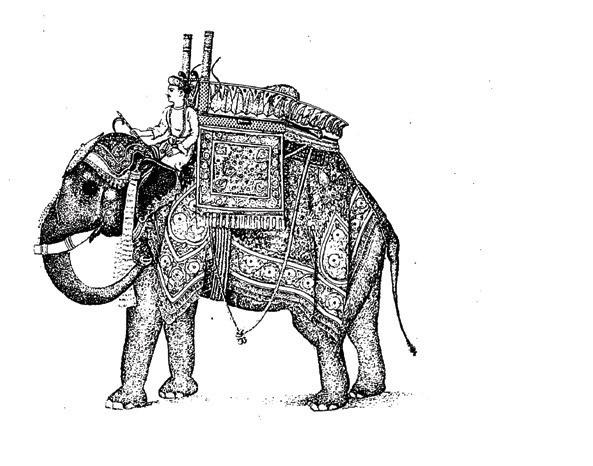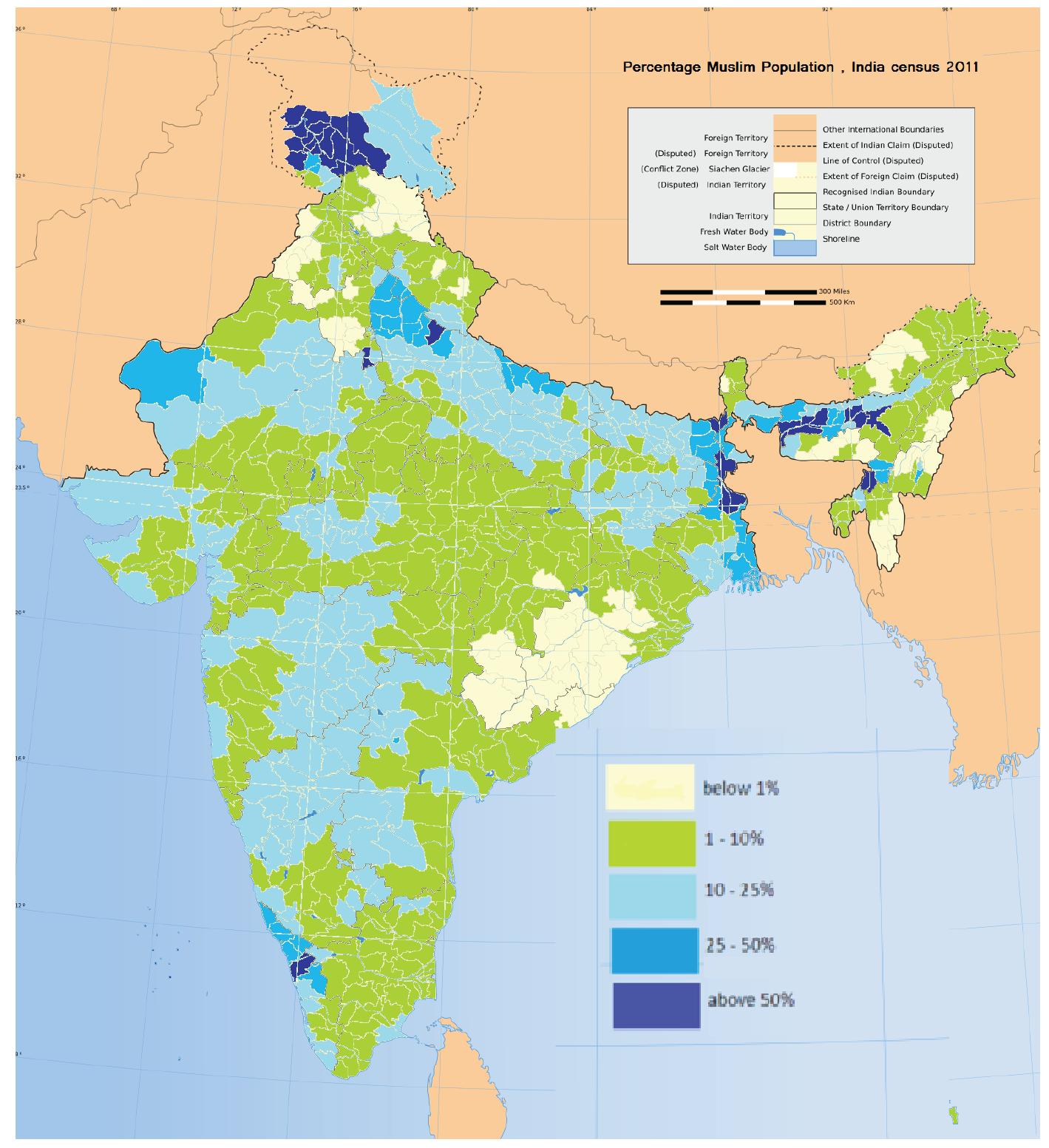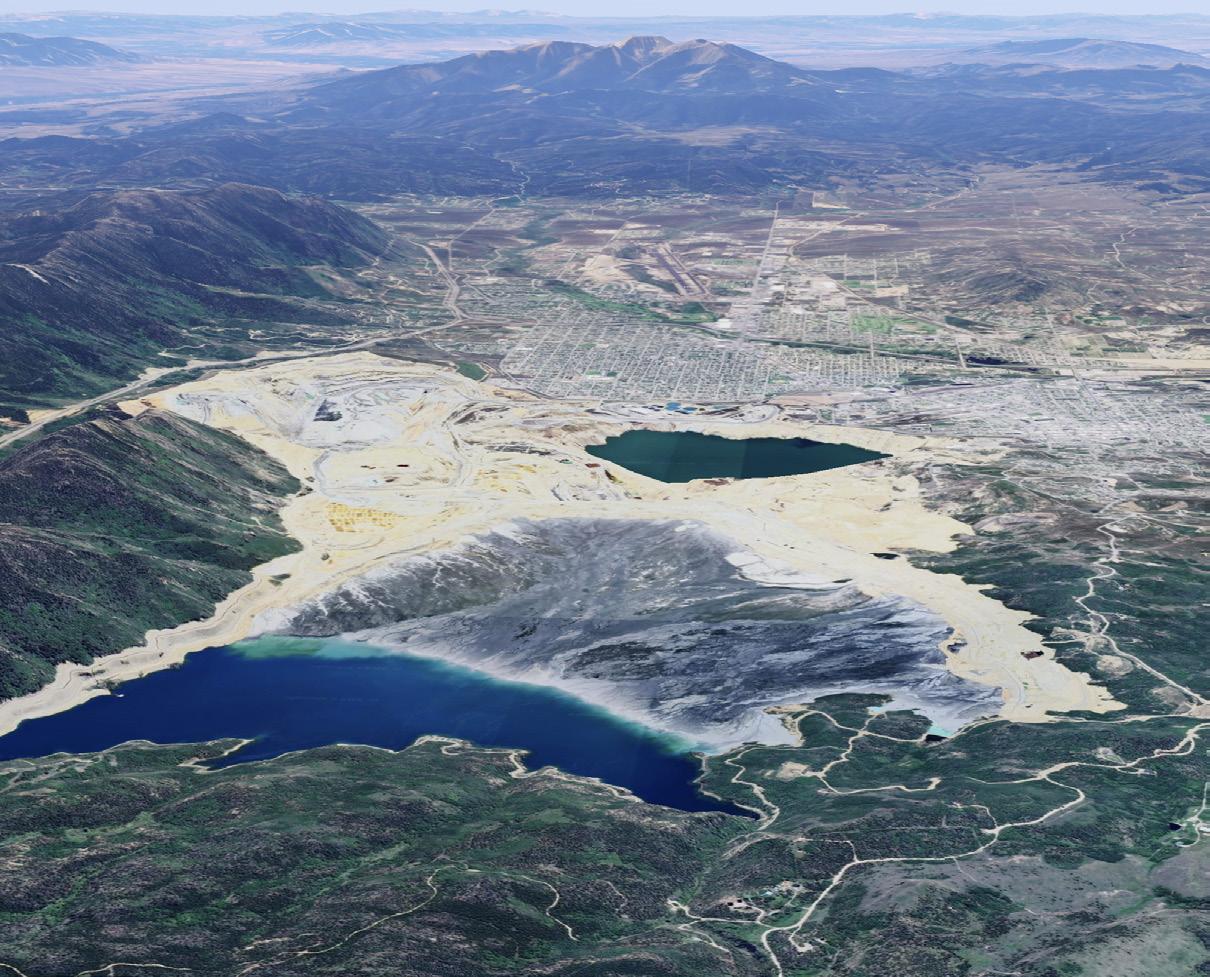




In a world where misunderstanding often divides us, this booklet emerges from an extraordinary international collaboration of scholars, students, and activists united in their mission to combat hate and Islamophobia. Born from workshops spanning three continents, led by Dr. Syed Ali Hussain (University of Sharjah), with support from Dr. Lena Roos (Södertörn University, Sweden) and Mohammad Anas (Aligarh Muslim University, India). They brought together students whose insights and experiences form the foundation of this work.
The visual power and presentation of this booklet spring from the creative talents of Ali Javed, Sameera Masoodi, and Yusuf Nomani of Nous Network in Delhi, India, working in concert with Younus Nomani (West Texas A&M University).
We are deeply indebted to our dedicated team at CME-US—Khushbo Khalil, Jameel Subhan, and a number of ASU student volunteers—who are working to reshape the narrative about Muslims in America and beyond. We strive to tell a new story: one of belonging, contribution, and shared humanity. Our vision is a future where Muslims are recognized and embraced as integral members of communities worldwide—as neighbors, fellow citizens, and friends.
This work would not be possible without the generous support of the American Council of Learned Societies, the Luce Foundation and the work of Dr. Syed Ali Hussain. We are deeply grateful to Arizona State University, particularly Dean Jeffrey Cohen of the Humanities, for their commitment to our mission. To our ‘friends of CME’ and our national and international donors: your support sustains our vision and amplifies our impact. Through these pages, we invite you to join us in building bridges of understanding. Together, we can create a world where dignity and belonging know no boundaries, Insha’Allah, God willing.
Warmest regards,

Yasmin Saikia

Chad Haines CME-US Co-Directors

Truth: The perception that Islam encourages violence often comes from misinterpretations of Islamic scriptures and beliefs, a lack of comprehensive knowledge about Muslim history, and biased perspectives on contemporary geo-politics. Islam, like many other religions, advocates for peace and compassion. Most Muslims live peacefully and condemn violence, which is the true Islamic idea of jihad, struggle, and not political violence the term is often associated with. Muslim leaders and communities worldwide have vocally condemned terrorism and violence. After the 9/11 attacks, condemnation came from all corners, including countries often politically opposed to the U.S., such as Iran, Libya, and Syria.

Truth: Muslims are a part of diverse cultures across the globe, including Europe and North America. They cherish values such as justice, charity, equality, and family—principles that resonate universally, not just in the West. Islam and Western societies are intricately interwoven, many of the foundational values that the West promotes today in fact emerged in Europe through Muslim and Jewish scholars during the Renaissance.

Truth: Patriarchy exists across all societies, not just within Muslim communities. Many Muslim women excel as leaders in politics, business, education, and beyond. Several Muslim-majority countries have democratically elected women in the highest political offices, showcasing their significant contributions to societal progress.

Muslims are Mostly Arab, and Islam is a Monolithic Culture

Truth: While Islam began in the Arabian Peninsula, Muslims are incredibly diverse, coming from nearly every country. Arab Muslims constitute less than 20% of the global Muslim population. The largest Muslim populations are in South and Southeast Asia, highlighting Islam’s multicultural and multiethnic reality.

Truth: Islamophobia has a long history, deeply intertwined with Orientalism, an outdated, simplistic and biased view of Muslims and Eastern cultures. These stereotypes have perpetuated misunderstanding and prejudice for centuries, influencing how Muslims are perceived today.

Across America’s screens, Hollywood subtly but powerfully shapes our collective consciousness. As a cultural storyteller, it influences perceptions through the persistent use of stereotypes, reducing rich identities to simplistic caricatures.
These portrayals, more than entertainment, serve as templates for shaping our understanding of different communities. Repeated exposure leads viewers to unconsciously internalize these stereotypes, embedding them into their worldviews.
Hollywood films often depict marginalized communities through clichéd characters and reductive narratives, emphasizing certain traits while overlooking individual complexities. For example, racial, ethnic, or gender groups may be persistently linked to criminality, aggression, or subservience, creating biased imagery that audiences absorb subconsciously.
As audiences consume these portrayals, they internalize the stereotypes, embedding them into their cognitive frameworks. Research indicates that media consumption fosters implicit biases through “priming,” where repeated negative depictions prime viewers to associate certain groups with undesirable traits. This internalization influences real-world perceptions and social interactions. 5.

Internalized stereotypes integrate into cognitive schemas, guiding information processing and understanding. Cognitive biases, such as confirmation bias, reinforce these stereotypes by favoring information that aligns with preexisting beliefs. For example, exposure to media narratives portraying a racial group as dangerous may lead individuals to unconsciously expect threatening behavior from members of that group, even in neutral situations.
Real-world events involving stereotyped groups trigger these internalized biases. Media coverage of such incidents often emphasizes aspects aligning with stereotypes, further amplifying negative associations. This coverage perpetuates the cycle, interpreting events through the lens of ingrained biases and reinforcing existing prejudices.
When news breaks about an incident involving members of stereotyped groups, our media-influenced mental frameworks spring into action. We unconsciously filter information through these preexisting biases, often seeking out details that confirm our internalized stereotypes while dismissing contradictory evidence. This selective perception reinforces our biased viewpoints, strengthening the very stereotypes that influenced our initial interpretation. The feedback loop makes challenging these beliefs more difficult.


Activated stereotypes can provoke extreme reactions like hate speech, violence, and public displays of disgust. Racial profiling and verbal abuse, for instance, are often traced back to media-driven biases. These reactions are not isolated but result from a cognitive process initiated by stereotypical portrayals in media.

The cycle gains momentum as these internalized stereotypes manifest in actual behavior. What begins as mental associations can evolve into concrete actions: subtle expressions of bias, discriminatory behavior, or even overt hostility. These real-world manifestations then attract media attention, creating news stories that often inadvertently reinforce the original stereotypes. The media coverage of these incidents becomes fresh fodder for Hollywood’s creative machine, inspiring new content that perpetuates familiar stereotypical narratives.
Understanding this cycle offers hope for disruption. Recognizing how media shapes our thinking, we can challenge ingrained patterns through conscious awareness and resistance to stereotypes. Change requires diverse voices in storytelling and authentic representations, supported by media literacy and inclusive industry initiatives.

“All mankind is from Adam and Eve, an Arab has no superiority over a non-Arab nor a non-Arab has any superiority over an Arab; also a White has no superiority over a Black nor a Black has any superiority over a White except by piety and good action.”
Last Sermon of Prophet Muhammad (p.b.u.h) Ninth day of Dhul-Hijjah, 10 A.H. (March 6, 632 AD) in Mount Arafat in Mecca 10.



In every society, religious beliefs intertwine with cultural traditions and values, shaped by long histories and diverse social forces. In the 19th and 20th centuries, European colonization of many Muslim-majority countries significantly altered religious and cultural practices. For instance, the British colonial rulers introduced blasphemy statutes in their colonies, reshaping local traditions and inter-religious relationships.
The practices and status of women vary significantly across Muslim societies. For example, in Iran, women are legally required to wear headscarves, yet Iranian women surpass men in STEM fields. This contrast highlights how cultural practices can coexist with progressive societal achievements.
Islamic theology, as outlined in the Qur’an, emphasizes equity for people of different faiths and respect for women. Over 1400 years ago, Islam granted women rights such as owning property, seeking divorce, and pursuing education. However, local cultural traditions and politics sometimes overshadow these religious teachings, as seen in contemporary Afghanistan.
Despite Islam’s inherent values of pluralism and tolerance, stereotypes about Muslims persist, often ignoring the economic and political marginalization they face worldwide. These stereotypes are reinforced by media, popular culture, and political discourse.

Stereotyping those who are different or less understood is a common societal practice. However, the portrayal of Muslims transcends simple stereotyping. It is influenced by Orientalism, a framework established during the colonial era to depict Eastern societies, especially Muslims, as exotic, backward, and inferior. Orientalism served as a tool for colonial powers to assert dominance over Muslim societies by essentializing their cultures, histories, and religious practices.
This manifests differently across countries: 14.
In the United States, Islamophobia stems from the belief that Islam conflicts with American values, particularly freedom.
To combat the hatred inherent in Islamophobia, it is essential to:
Understand the history behind negative representations of Muslims.
Explore the rich diversity of Muslim cultures and histories.
Engage with Muslims to learn their perspectives on their religion, histories, and cultures.
In Europe, Islamophobia often ties to antiimmigrant sentiments.
In India, Islamophobia is linked to an ethno-nationalist agenda aiming to define India as a Hindu nation.
Reflect on our society’s history of intolerance and its commitment to pluralism.
Foster dialogue through listening and sharing experiences.
Muslims in North America are the most diverse in the world, with origins from over 75 countries and approximately half born in the United States or Canada.

There are around 45 million Muslims in countries such as Turkey, UK, Germany, France, Sweden, Belgium, Netherlands, Austria, Denmark, Bosnia-Herzegovina, Albania, Macedonia, Greece, and Kosovo.
One of the fastest-growing communities of Muslims in the world today is in Latin America, particularly Brazil, Argentina, Mexico, Venezuela, Trinidad and Tobago.
Sub-Saharan Africa includes regions south of the Sahara Desert, such as West Africa, East Africa, Central Africa, and Southern Africa. Islam is widely practiced across many of these regions, particularly in West and East Africa. There are about 350-400 million Muslims with Nigeria being the most populous Muslim country in Africa.

The Middle East’s total population is around 370 million, representing approximately 4.6% of the world’s population, with most being Muslims. Less than 20% of the worldwide Muslim population is Arab and approximately 15% of all Arabs are Christian.
North Africa has a high concentration of Muslims, with Islam being the predominant religion in countries such as Egypt, Algeria, Morocco, Tunisia, Libya, and Mauritania.
There are 57 Muslim majority countries in the world, with Indonesia, Pakistan, India, and Bangladesh being the most populous. Asia has around 1.1-1.2 billion Muslims. These countries are highly diverse in ethnicity, culture, and language.
Muslims in Oceania represent about 0.05% of the global Muslim population. The total Muslim population in Oceania, which includes Australia, New Zealand, and the Pacific Islands, is roughly 900,000950,000. 17.



Though only 14.2% of the total population, the approximately 200 million Muslims of India constitute the world’s largest religious minority within a single country and ranks India as the 3rd largest Muslim country in the world. Muslims have been part of the fabric of Indian history since the rise of Islam in the 7th century.
India’s Muslim population, like everywhere throughout the Muslim world, is highly diverse. This is evident in language, dress and local customs. In total number, a majority of Muslims live in the Indian states of Uttar Pradesh and Bihar. By percentage of the population, Muslims in the state of Jammu and Kashmir make up 68% of the population. The next most populous is the northeastern state of Assam, where Muslims make up 35% of the population. West Bengal, in eastern India, and Kerala, in the south, each are about 27% Muslim. The small island of Lakshadweep, with a population of only 65,000 is 97% Muslim (according to the last Indian census).
According to the Pew Research Center’s 2021 report, over 50% of Indian Muslims are classified as socially and economically disadvantaged, with approximately 31.4% of urban Muslims and 35.8% of rural Muslims living below the poverty line. Yet, there are notable signs of progress: Muslim literacy rates have shown the fastest growth among all religious communities, rising from 48% in 1991 to 68.5% in 2011.

Muslim women’s higher education enrollment in urban areas has increased by 8.7% annually since 2014, outpacing the national average. Leading institutions like Aligarh Muslim University and Jamia Millia Islamia rank among India’s top universities, while Muslim entrepreneurship in small and medium enterprises has grown by 32% in metropolitan areas since 2015, demonstrating the community’s growing participation in India’s modern economy.



Indonesia, with the world’s largest Muslim population of approximately 231 million, exemplifies a unique model of Islamic modernization. The country’s rich diversity spans over 600 ethnic communities, with Javanese comprising 40% of the population, followed by Sundanese at 15.5%, Batak at 3.5%, and Balinese (predominantly Hindu) at 1.6%. Religiously, Muslims make up 87% of the total population, with 11% of the population being Christian and 1.6% being Hindu.
According to a 2023 Pew study, the majority of Indonesians view religious pluralism as beneficial to society, underscoring the nation’s commitment to inclusivity.
Historically, Indonesia’s peaceful adoption of Islam, facilitated by trading networks and Sufi scholars between the 13th and 16th centuries, established a foundation of cultural and commercial openness. Today, this legacy is sustained by Islamic institutions like Nahdlatul Ulama (NU) and Muhammadiyah, which together represent over 90 million members. These organizations operate extensive networks of schools, universities, hospitals, and microfinance initiatives while promoting ‘Islam Nusantara’—a progressive interpretation of Islam that integrates modernity with cultural traditions. 20.
Economically, Indonesia is among the fastest-growing economies globally, with a GDP of $1.32 trillion in 2022. Islamic finance has been a major driver, positioning the country as a global leader in the sukuk (Islamic bonds) market. The growth of Islamic banking and the rise of halal tourism have further boosted small businesses and entrepreneurship, generating billions in revenue annually.
Indonesian women play a significant role in public life, exemplifying progressive Islamic values. The country has had a female president, and women hold key positions in government, business, and religious scholarship. Female students frequently outnumber males in universities, including Islamic institutions, while cities like Jakarta and Bandung thrive as centers for Islamic fashion, technology startups, and creative industries.
Despite its progress, Indonesia faces challenges, including regional economic disparities and the rise of religious conservatism in some urban areas. However, these challenges coexist with aspirations for modernity and inclusiveness. Indonesia’s experience demonstrates how Islamic values, when embraced alongside diversity and development, can foster a vibrant and pluralistic society.




The story of Islam in America is as diverse as America itself, weaving together threads from across the globe to create a unique pattern of religious and cultural pluralism. The American Muslim community stands as perhaps the most diverse Muslim population anywhere in the world, embodying the American ideals of plurality and inclusiveness in ways that few other religious communities can match.
This diversity is not just about different individuals or ancestral origins. It encompasses the full spectrum of human experience: varying theological interpretations, distinct cultural practices, different economic circumstances, and diverse generational perspectives. What makes this community particularly fascinating is how these differences do not divide but rather enrich the American Muslim experience.
The roots of Islam in America run far deeper than many realize. While popular perception often frames Muslims as newcomers to American shores, their presence, some scholars suggest, predates even before European exploration. What we know with certainty is that Muslims were here from the very beginning of European contact with the New World (Michael A. Gomez, Black Crescent: The Experience and Legacy of African Muslims in the Americas, 2005).
One of the most poignant chapters in this history involves the Muslim slaves brought to American shores. Historical records reveal that between 10% and 15% of all enslaved Africans brought to North America were Muslim. These individuals carried with them rich Islamic traditions, scholarly knowledge, and cultural practices. Tragically, their religious identity was systematically erased through generations of forced conversions, deliberate family separations, and denial of education. The story of their faith, resilience, and ultimate loss of religious identity stands as a testament to the brutal nature of American slavery (Allan D. Austin, African Muslims in Antebellum America, 1997; Sylviane A. Diouf, Servants of Allah, 2013).

The Highland Park Mosque in Michigan depicted in 1924.

The Mosque was one of the first built in the United States. It opened in 1921 but closed a few years later
The late 1800s marked the beginning of a new chapter in American Muslim history, as immigrants from various parts of the Muslim world began arriving on American shores. Among the earliest were Muslims fleeing the declining Ottoman Empire and the expanding Austro-Hungarian Empire. Turkish military officers could be found in Providence, Rhode Island, in the 1870s, training at local munitions factories and forging early diplomatic ties between the United States and the Muslim world (Kemal H. Karpat, ‘The Ottoman Emigration to America, 1860-1914,’ International Journal of Middle East Studies, Vol. 17 (2), May, 1985: 175-209).
The American Muslim story continued to evolve with the arrival of Lebanese and Lipka Tartars who established themselves first in New York before spreading across the country as entrepreneurs and traveling salesmen. Their commercial networks helped connect different regions of America while introducing Islamic cultural elements to various communities (Misbahuddin Mirza, “The Vanguard of Islam in America,” Islamic Horizon, July/August 2024; Ryan Schuelsser, “America’s Oldest Muslim Families on the Trump Presidency: ‘This can’t deter us,’” The Guardian, January 18, 2017).
Simultaneously, Bosnian Muslims were establishing communities in unexpected places. They found work as miners in Butte, Montana, and settled in places as far-flung as Globe, Arizona. These early immigrants demonstrated their commitment to their new homeland by serving in the U.S. military during World War I, adding another layer to America’s diverse military heritage (Olivia Miller, “Bosnian Americans”, Gale Encyclopedia of Multicultural America, Vol. 1, 3rd edition, 2014: 331-341).


Fig: Samira Puskar, Bosnian Americans of Chicagoland, 2007
The early 1900s saw yet another significant wave of Muslim immigration, this time from South Asia. These newcomers, particularly from Bengal and the Punjab regions of British India, brought with them entrepreneurial skills and agricultural expertise that would transform parts of the American landscape (Vivek Bald, Bengali Harlem and the Lost Histories of South Asian America, 2013; Nayan Shah, Stranger Intimacy, 2012; Gary R. Hess, ‘The Forgotten Asian Americans: The East Indian Community in the United States, Pacific Historical Review Volume,’ 43 (4), 1974: 576–596).
In Phoenix’s West Valley, Punjabi Muslims reintroduced irrigation techniques from their homeland, contributing to the area’s agricultural development. Their impact wasn’t limited to farming; they became community leaders and political activists.

The story of Mubarak Ali Khan (1898-1963) exemplifies this civic engagement, as his advocacy played a crucial role in passing the Luce-Celler Act of 1946, which opened pathways to citizenship for South Asian immigrants.
Today’s American Muslim community continues this legacy of diversity and contribution. Recent studies show American Muslims representing over 75 different national backgrounds, multiple theological traditions, and various socioeconomic levels. They are entrepreneurs, physicians, teachers, artists, taxi drivers and public servants, each adding their unique perspective to the American story (Pew Research Center, “Muslim Americans: Middle Class and Mostly Mainstream,” 2017; Institute for Social Policy and Understanding (ISPU), “American Muslim Poll,” 2021).

In the United States, 45% of all Muslims are American-born.
Muslim Americans have 2.4 children, on average
31% of Muslims have college or postgraduate degrees. This is equivalent to the number of U.S. adults having an advanced degree at 31%
24% of Muslims and 23% of all Americans have salaries over $100,000
40% of Muslims have incomes below $30,000 compared to 32% of the U.S. population as a whole.
35% of Muslims earn between $30,000 to $99,000 as compared to 45% of the general American population.
There is extreme diversity within the Muslim American population. The differences are not merely between immigrants with different national backgrounds, nor merely theological, such as between Sunni and Shi’a Muslims.
American Muslims have contributed to the building of this country, demonstrating that religious diversity has always been part of the American experience.
This rich history reminds us that the story of Islam in America is not a sidebar to American history but an integral part of it. From the earliest days of the nation through the present, American Muslims have contributed to the building of this country, demonstrating that religious diversity has always been part of the American experience.
The continuing evolution of the American Muslim community serves as a powerful reminder of America’s capacity to embrace diversity while maintaining unity. It stands as a testament to the enduring strength of American pluralism and the ability of different cultures and faiths to coexist and thrive within the American democratic experiment.

MISSION:
Drawing on ASU’s charter of inclusivity, public values and community impact — as well as on Islamic ethics of justice, equity and respect of difference — the Center of Muslim Experience in the United States is a unique and original endeavor bringing together a wide range of partners and advancing its mission to create scholarship, disseminate knowledge and strengthen ASU student success.
cme.asu.edu
cmeus@asu.edu

